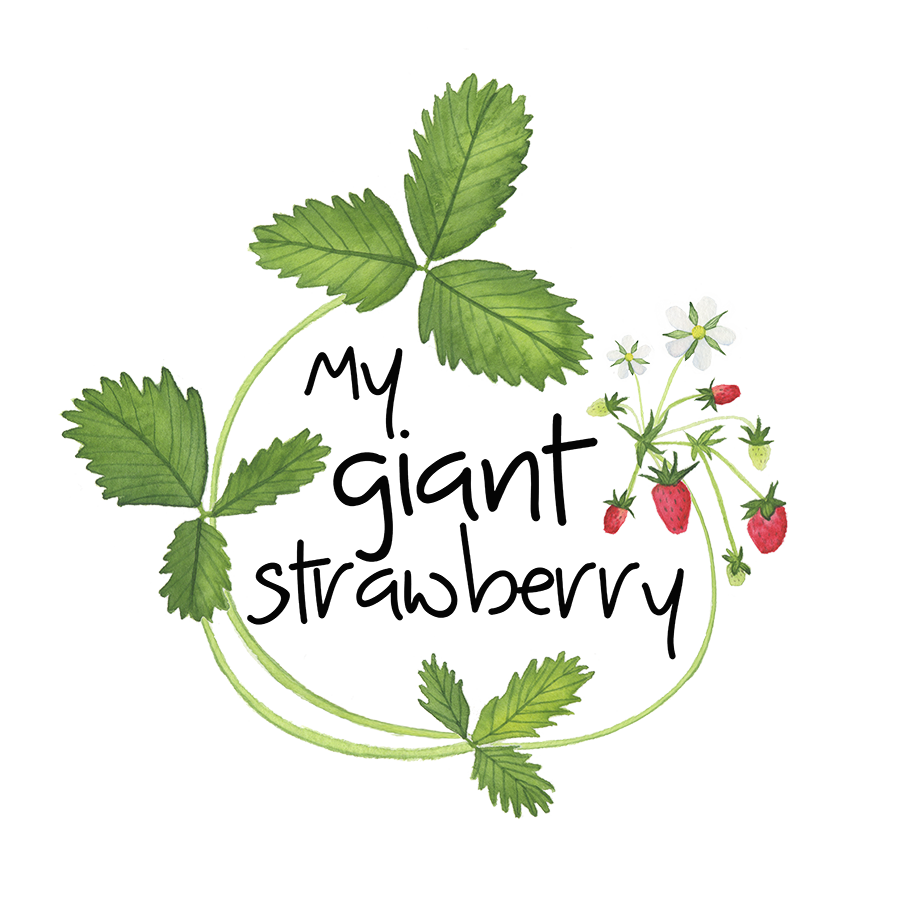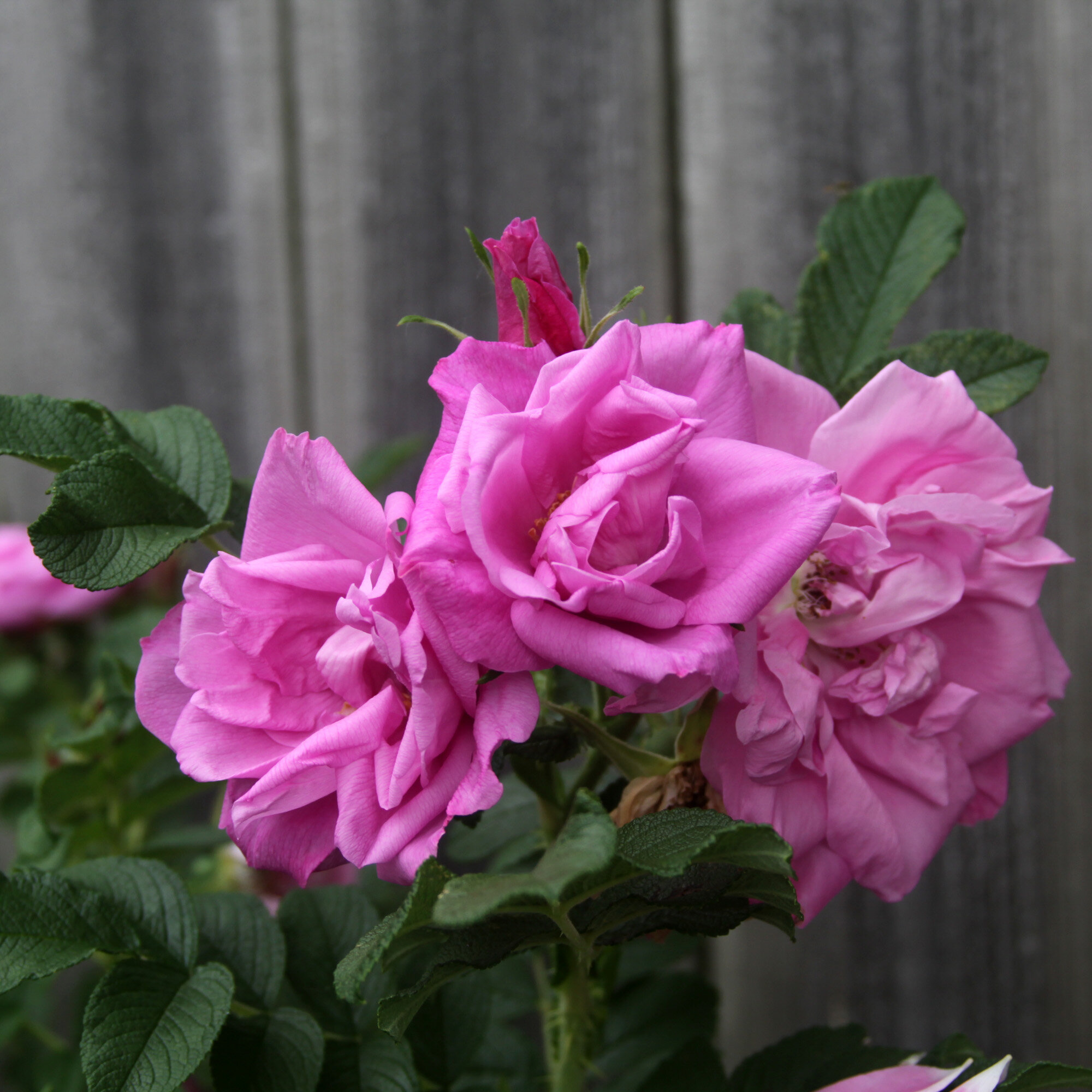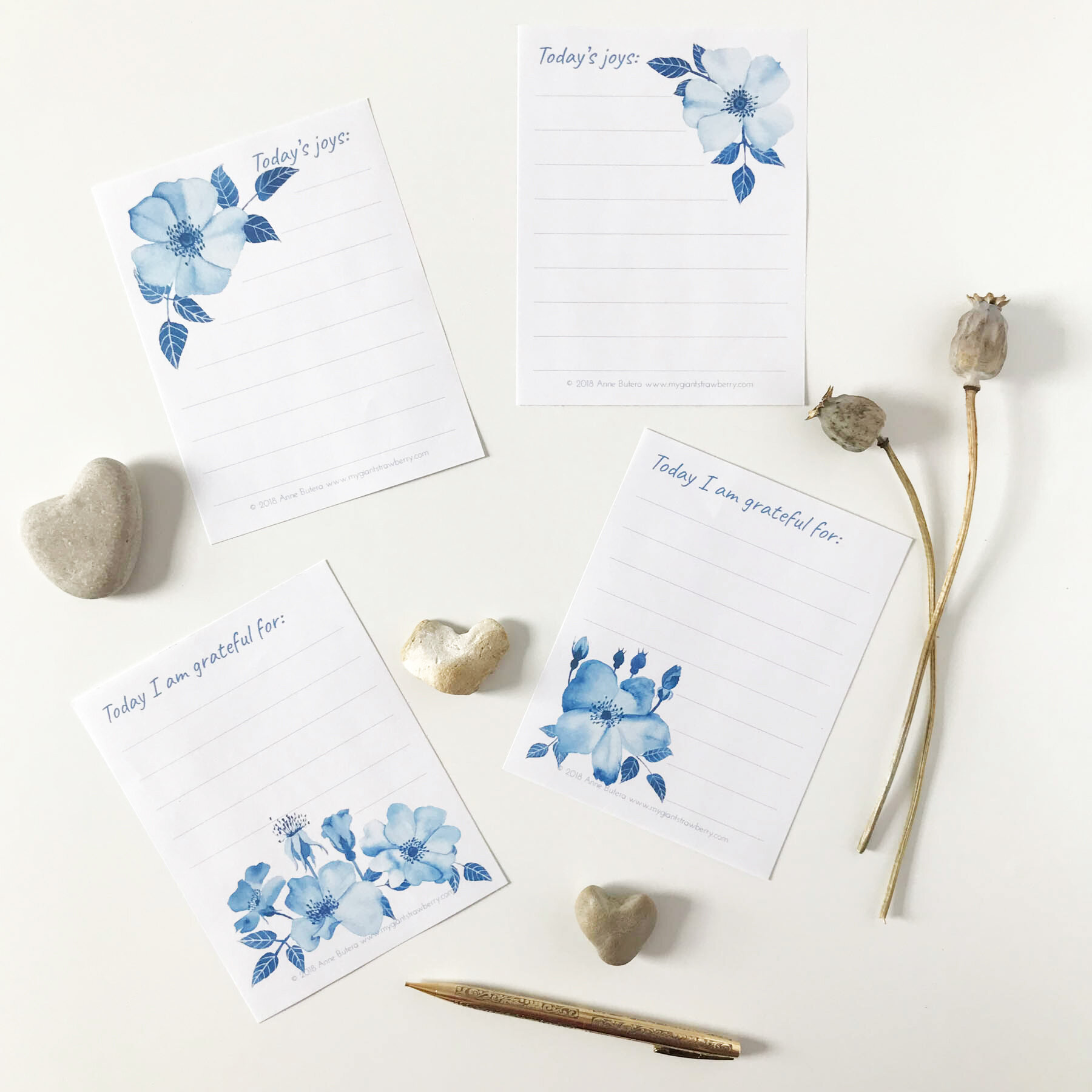Growing Roses in my Zone 4b -- Now Zone 5a --, No-Spray, Wisconsin Garden
Edit: In 2023 the USDA updated their hardiness zones and my Wisconsin garden went from Zone 4b to Zone 5a.
Also, since this post I have removed most of these roses from my garden because the Japanese beetles in our area have gotten worse and worse. One of the roses I continue to grow is David Austin’s The Poet’s Wife. It’s beautiful, healthy fragrant and withstands the beetles better than others.
This is my seventh summer in my current garden. It’s a bit hard for me to believe it’s been that long already. I’ll have to do a general post about creating this garden, but today I want to talk about roses. (Note, all of the photos in this post are from this year’s garden).
The rugosa rose Hansa is very fragrant
I fell in love with roses when I lived in Cleveland. I can’t completely track the progression of my obsession, but some convergence of reading Rose Daughter, visiting the Cleveland Botanical Garden and discovering David Austin’s roses helped to fuel my passion.
what may or may not be the Gertrude Jekyll rose blooming for the first time in my garden
I had no idea what I was doing and I made a lot of mistakes along the way, but I filled my first garden with more and more roses during my time there (see this post and this one and this one from my old blog).
When I moved to Wisconsin, I knew it would be a bit more difficult to grow roses, or at least I would have a more limited choice of which roses to grow. My Cleveland garden was in zone 6a. This garden is 4b.
Therese Bugnet is always the first rose to bloom in my garden
At first my budget was minuscule and I also didn’t know how long I’d be in this house, so I didn’t rush to fill the garden with roses. I planted a couple super-clearance, bare root “tube” roses I found at a big box store and I bought a few banded (small, less expensive rooted cuttings) roses online (you can read more about them here). The bare root roses went right in the ground (and they’re still growing today). I kept the banded roses in pots with the intention of letting them get bigger and more vigorous before putting them directly into the ground. I overwintered the pots in the garage, but the roses did not make it. I’m not sure what went wrong with them as I have overwintered other plants this way without a problem.
Head Over Heels rose flowers bloom in clusters which open into little pom poms
At that point I was discouraged. And uncertain about growing roses here at all. I began to look at my garden (and my gardening style) a bit differently.
Even so, my passion for roses wasn’t gone and I slowly added more roses to my garden. I think the turning point was four years ago when Matthias bought me the rose Above and Beyond at the local agri-center. It’s a monster of a rose and so cold-hardy that there’s never any winter die-back, even with no protection. Choosing roses from a local garden center run by knowledgeable staff is a good way to find plants that will be hardy in your area. It’s also a good way to see what the flowers will look like and how they smell.
Above and Beyond Rose
Combining the information on plant tags and in catalogs with some research online (and in books!) helps form a more complete picture of how a rose will perform in the garden. I’ve found that some catalogs and online plant retailers are overly optimistic with their descriptions and not always accurate with their estimated hardiness zones. The websites Help Me Find and Dave’s Garden are both good places to start. The customer reviews on Heirloom Roses have been helpful for me when trying to decide which roses to grow. The plants I’ve bought from them have been excellent, too. Google the rose’s name and I’ll find forum discussions and blog posts from gardeners happy to share their experiences (and photos!).
Jacques Cartier rose after the rain
For me the important things to look for in a rose: extreme winter hardiness, disease resistance and fragrance. I tend not to protect my roses for the winter. Autumn usually throws me for a loop and I’m lucky if I can plant my garlic and a few bulbs before being driven inside for the winter. I don’t do a big autumn clean-up in the garden, preferring to leave food and habitat for wildlife. Perhaps being surrounded by plant skeletons helps to shelter the roses, or maybe I’ve done a good job choosing the hardiest varieties. So far, other than those poor babies in the garage, I haven’t yet lost a rose to winter’s chill.
the John Davis rose is very winter hardy
In the spring, once my plants start to show signs of growth, I prune my roses. Waiting for signs of growth lets me know which canes (if any) are dead. I fertilize with Rosetone (or other similar, organic fertilizers) and/or fish fertilizer and I usually add compost and/or manure to my garden beds in the spring when I plant my seeds. A dose of Epsom salts with the first fertilizing is also helpful. I don’t have a strict fertilizing schedule, but ideally it’s every 3-4 weeks.
Morden Blush is a very hardy rose, but it’s not fragrant
The biggest challenge in my garden is insect damage (as you can see in many of these photos!). I don’t spray any pesticides. Instead I remove insects by hand and try to cultivate a harmonious ecosystem of beneficials. Early this spring caterpillars and spittle bugs damaged all of my roses. I’ve noticed that wasps have been helping by eating the caterpillars. Last year I struggled with Japanese beetles (I’ve seen a few this week) and although applying milky spore to lawns is a natural approach to controlling them, my entire neighborhood would need to do it for it to be effective. Knocking the beetles into a container of soapy water is creepy and makes me feel like a murderer, but it’s the only other organic solution I know (if you have a better one, don’t hesitate to share it!).
Roses often find their way into my art. This year I was inspired by the leaves I pulled off roses I brought inside:
this watercolor painting of roses leaves is part of my spring collection of paintings
And I also painted one of the flowers:
this painting celebrates “what’s in bloom” and is part of my spring collection of paintings
I’ll probably paint some more roses this summer. I have many to choose from!
Do you grow roses? What are some of your favorite varieties?
The Roses in My Garden
Rugosa roses:
Therese Bugnet — This rugosa is the first to bloom in my garden. Its leaves are smoother than the typical rugosa and the flowers are very fragrant but short-lived. It is extremely hardy and has very little winter die-back. I’ve found that it does sometimes suffer from powdery mildew later in the humid summers and that the repeat bloom is never as lovely as the first flush of flowers.
Pink Grootendoorst — This rugosa has unusual flowers. They’re fairly small, their petals have serrated edges and they are not fragrant. It is also very prickly. This rose and Therese Bugnet were the first two I planted in my garden, bought as bare root roses in tubes. Although Therese Bugnet was correctly labeled, this rose was supposed to be Hansa. I probably wouldn’t choose to plant this one again as I prefer larger, fragrant flowers, but it been trouble-free.
Pink Grootendurst is an usual looking rugosa rose
Hansa — I think the third pink rugosa I’m growing is Hansa. It was a runner from my mom’s plant. It smells wonderful, is very hardy and I don’t remember it falling victim to any diseases.
Snow Pavement — I grew Blanc Double de Coubert rose in Cleveland, but I didn’t find that variety locally when I was looking for a white rugosa last year. I did find Snow Pavement and thought I’d try it. The flowers are really more of a very pale pink, especially when they first open, but they seem to last longer than other rugosas. So far for me this rose has been healthy, cold hardy and fragrant.
Snow Pavement is another very fragrant rugosa rose
Climbing Roses:
Above and Beyond — I fell in love with this rose when I saw it at the agri-center. It blooms in clusters and those clusters are fragrant. The color changes a lot as the flowers age, starting out a golden peach and lightening almost to white. It’s very hardy and grows tall (and fast). I’ve been treating it more like a monster shrub than a true climber because it seems to want to bush out in all directions. This year I pruned the whole thing to about knee height and it’s now nearly as tall as the 6 ft privacy fence. The first flush of flowers lasts a long time, but it doesn’t repeat well. It also seems to be the most attractive to the Japanese beetles.
John Davis — I know this rose can get very large as a climber, but so far mine has not. It’s bigger this year than it’s ever been. I planted it in a corner with the intention of it fanning out along the fence in both directions, but it’s barely taller than the plants surrounding it. I think this is its fourth summer and I’m not giving up.
Westerland — This is the second summer for this rose. It died down to the ground over the winter, but sprouted back up with shiny, healthy foliage. The flowers are orange and fragrant. I probably don’t have it growing in the best location; I think it gets too much shade, but it’s growing and blooming, making me think it’s quite tough.
the first bloom of the season on my Westerland Rose
Old Garden Roses:
Jacques Cartier — This is a Portland or a Damask Perpetual perpetual rose. The flowers are a lovely light pink and very fragrant. For me the first flush of bloom for this plant comes in very densely packed clusters of flowers with very short stems. They open a little oddly because they’re so close together and each flower is so full. Repeat bloom doesn’t seem to have this problem. Other than the crowded early flowers, it’s a lovely, healthy plant.
Yolande d’Aragon — This rose is considered a Portland Hybrid Perpetual. It’s a beautiful and very fragrant rose. The color is a deep pink and the flowers are filled with petals. It’s the third year in my garden for and my plant is not very vigorous; it had a lot of winter die back this year and has been slow to grow. What you see in the photo below is just about the entire plant. It’s barely a foot tall. But it IS blooming.
The Yolande d’Aragon rose in my garden this year
David Austin Roses:
Gertrude Jekyll — I grew the Gertrude Jekyll rose in Cleveland and it never did very well. It was planted in a bad spot and I think it had rose canker. The growth was spindly and it didn’t flower much. This year I decided to try again and the first flush of flowers is beautiful. They’re a deep pink with a strong old rose fragrance. I’m a little uncertain whether the plant I got is actually Gertrude Jekyll as the flowers look a bit different than they’re supposed to. I contacted the company and am waiting to hear back.
The Poet’s Wife — This rose is also new this year. The yellow flowers lighten as they age. The fragrance is a wonderful rose mixed with lemon. Delicious!
The Poet’s Wife Rose
Other Shrub Roses:
Aunt Honey — I guess it’s lovely that someone wanted to name a rose after their aunt, but I do feel a little silly saying the name. The flowers on this rose almost look like a hybrid tea. The plant is not large and bushy but it flowers reliably and is very healthy (and winter hardy; I think this is the fourth summer for my plant). The flowers are lightly fragrant and last a long time.
The flowers on the Aunt Honey rose are very lovely
Head Over Heels — this is another one I fell in love with after seeing (smelling) it in bloom at the agri-center. Shopping for roses in person, I always let my nose lead. These flowers smell lovely en masse and they’re born in large clusters. Individual flowers are small, but the plant is covered in them. It repeats well and hasn’t been plagued with disease. It’s the second summer for my plant and it came through the winter beautifully.
Quietness — This rose is new to my garden. I couldn’t resist the description or all the praise in online reviews (or the sale on the Heirloom Roses site). It’s supposed to be very cold hardy and tolerant of shade. The first few flowers are beautiful and fragrant and I can’t wait to see more.
Quietness Rose
Morden Blush — One of the Canadian Parkland roses, it’s bred to be extremely winter hardy. My plant made it through its first winter without a problem. The flowers are born in clusters and are lovely, but they aren’t fragrant.
You may have guessed that I love roses.
I do! So much so that I’ve created printable Joy and Gratitude lists adorned with blue watercolor roses.
They’re my gift to you when you Choose Joy and sign up for my email Joy Letter.


















